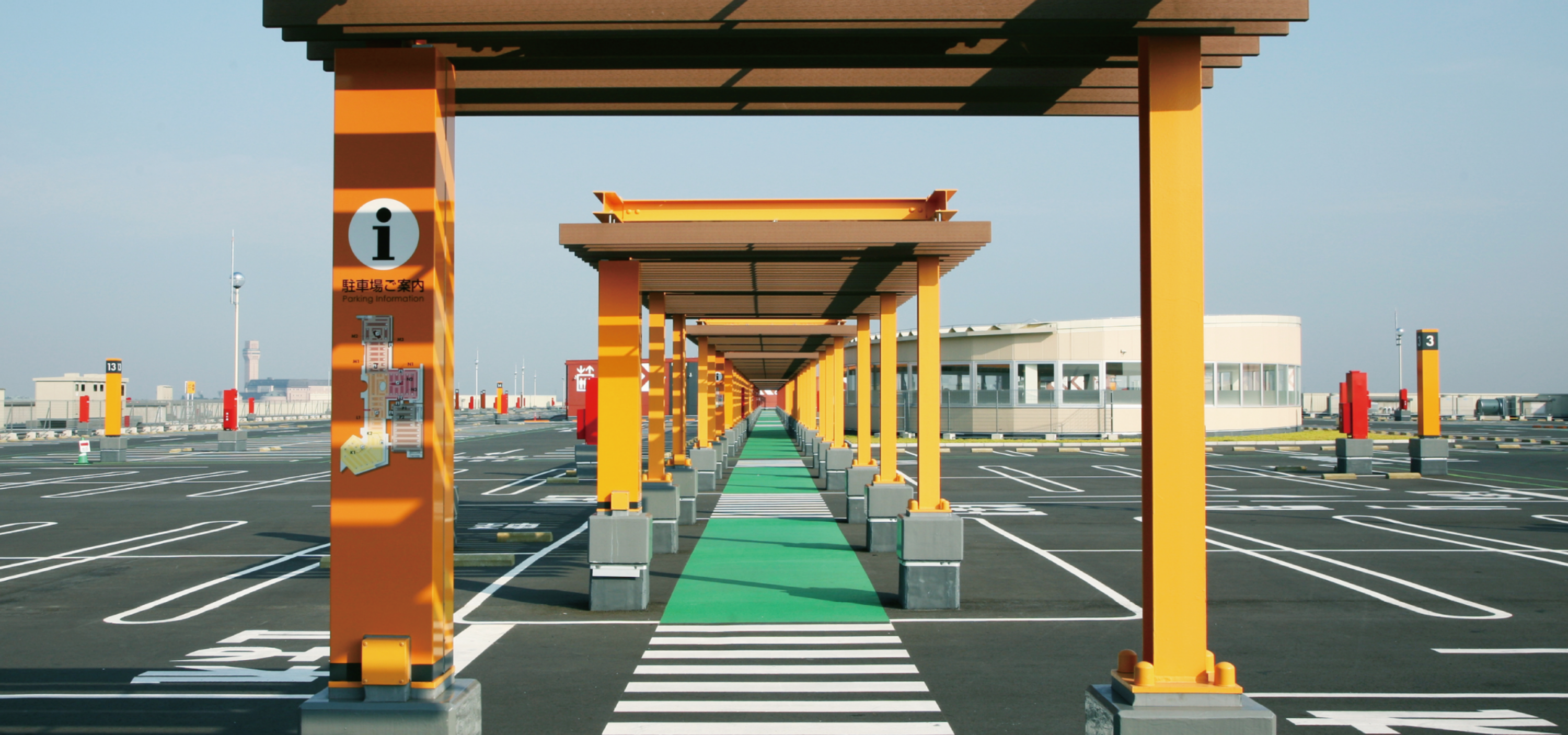

Universal Design
Universal design allows us to create spaces that are easily understood by everyone regardless of language or nationality.
With enhanced functionality and recognizability through the use of signs, pictograms and color, it allows us to feel that the space is free of restrictions and comfortable to use. By incorporating universal design in large-scale facilities where many people gather, such as food courts, shopping centers, or hospitals, we can create stress-free environments that everyone can easily understand and use without unnecessary complexity.
Furthermore, universal design allows people of all abilities, including wheelchair users, the elderly, and people with disabilities, to use such facilities safely without concerns.
Universal design is a tool that provides significant business benefits, such as enhancing customer satisfaction among users, lengthening the duration of visits to enjoy the facility, and increasing repeat clientele.
In Japan, universal design was fully implemented in the National Stadium for the 2020 Tokyo Olympics and Paralympics, enabling people of all abilities to enjoy using the facility.
In Japan, universal design was fully implemented in the National Stadium for the 2020 Tokyo Olympics and Paralympics, enabling people of all abilities to enjoy using the facility.


New National Stadium
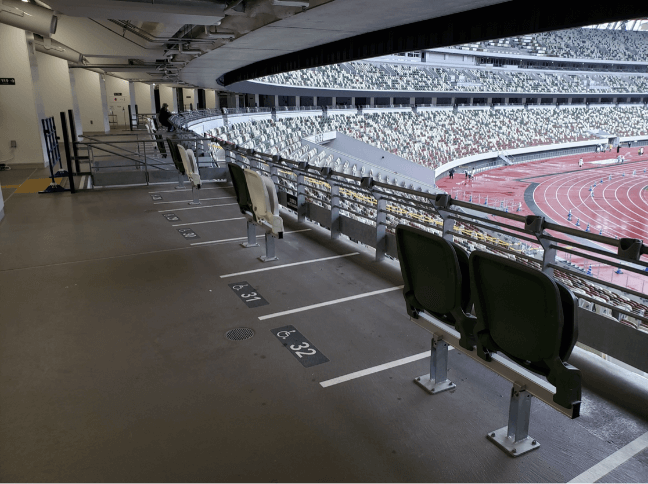
Seats designed for wheelchair
users and helpers
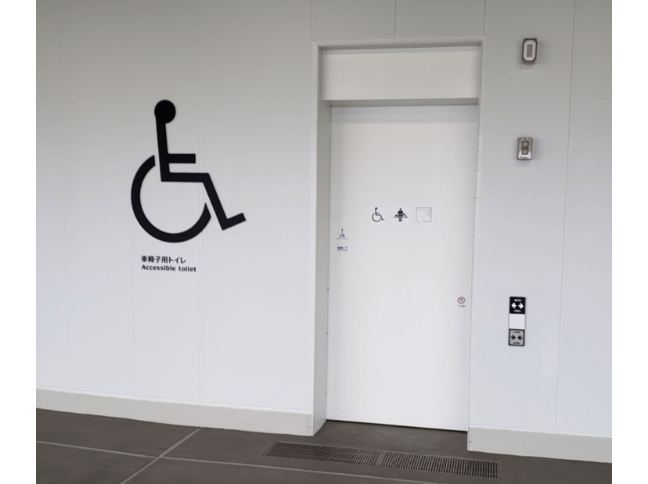
Wheelchair user restroom, located
next to wheelchair user seating area.
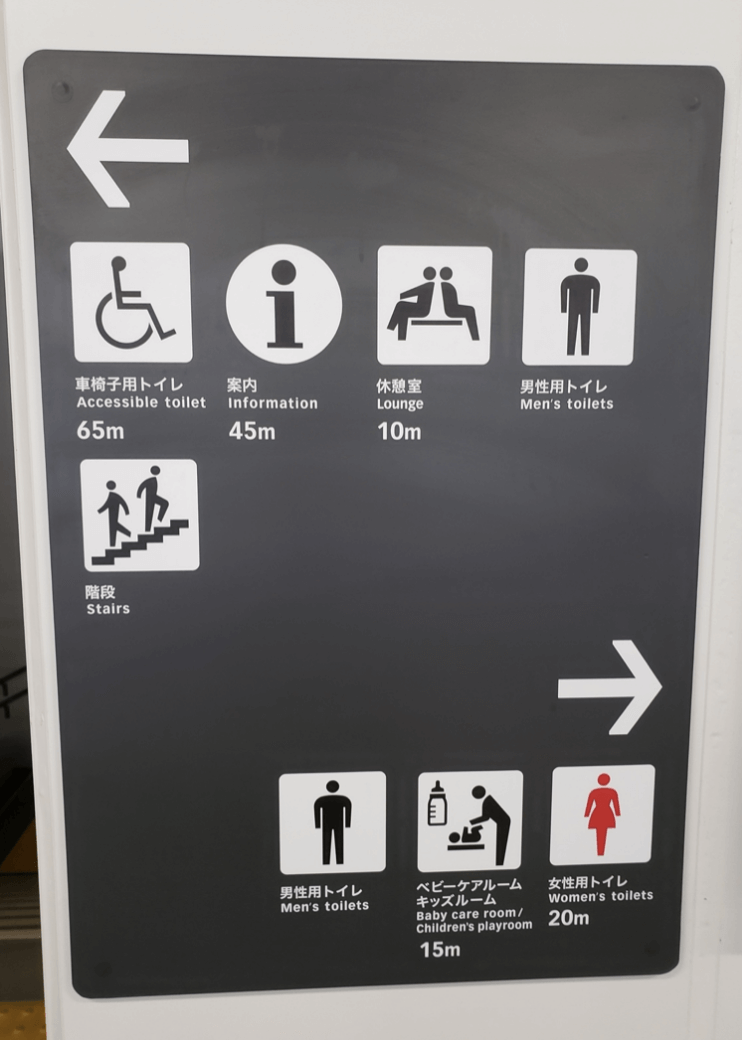
Guide utilizing pictogram signs
Facilities with Potential for Implementing Universal Design
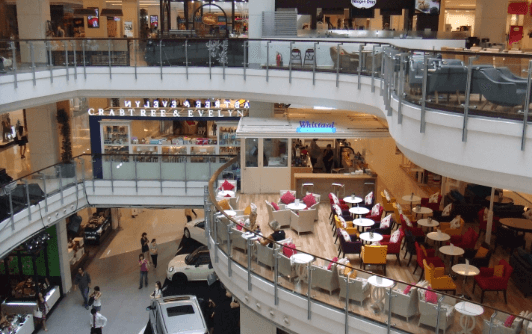
Shopping malls

Food courts &
large-scale restaurants
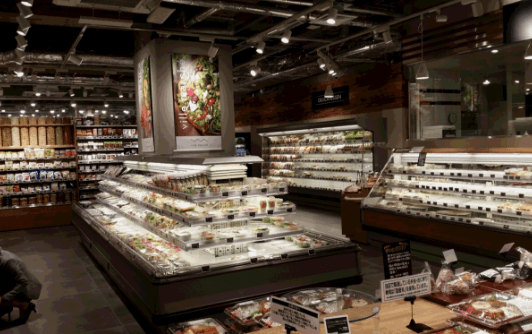
Supermarkets
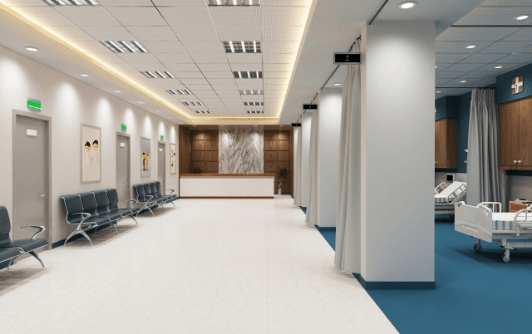
Hospitals &
medical facilities
Examples of Universal Design Implementation
- Restroom
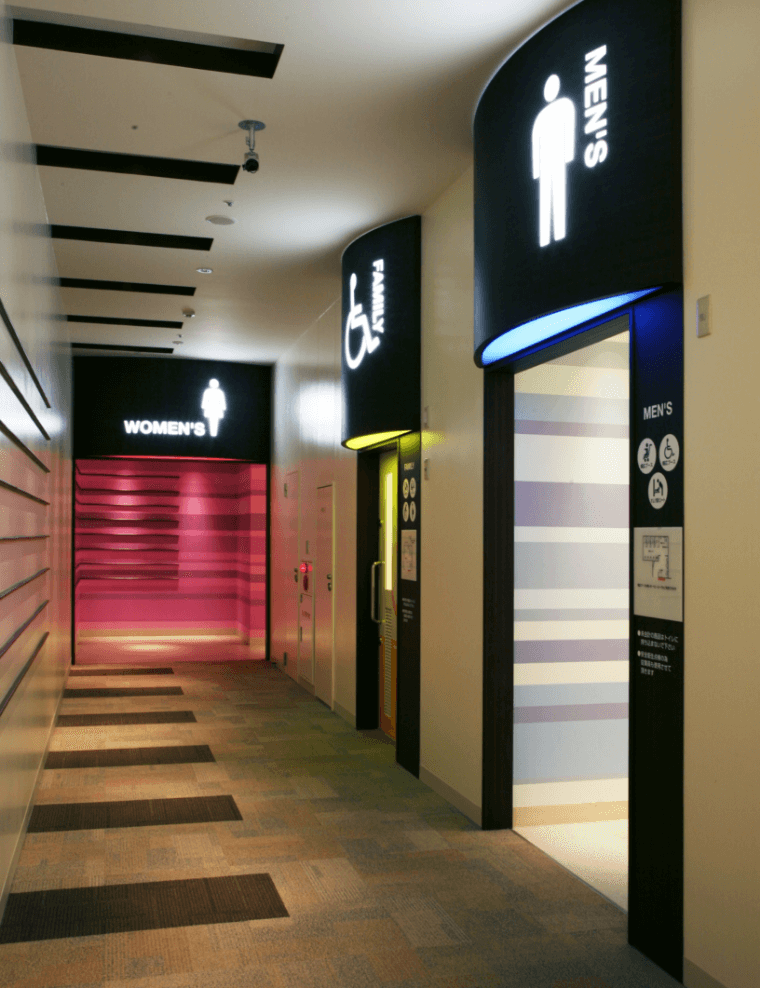
Signage - Disability-accessible
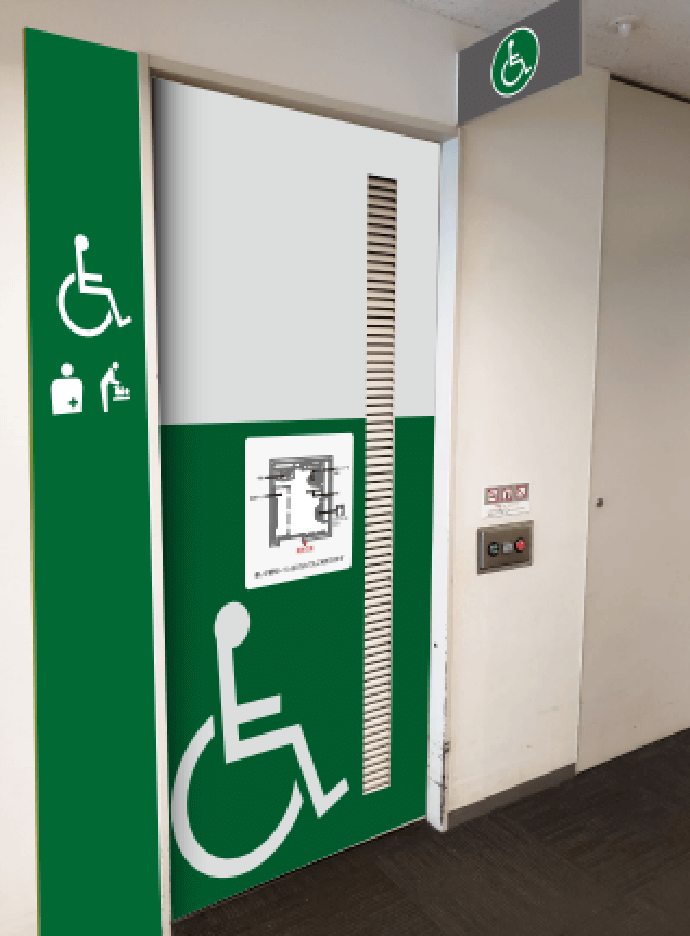
restroom - Rest area
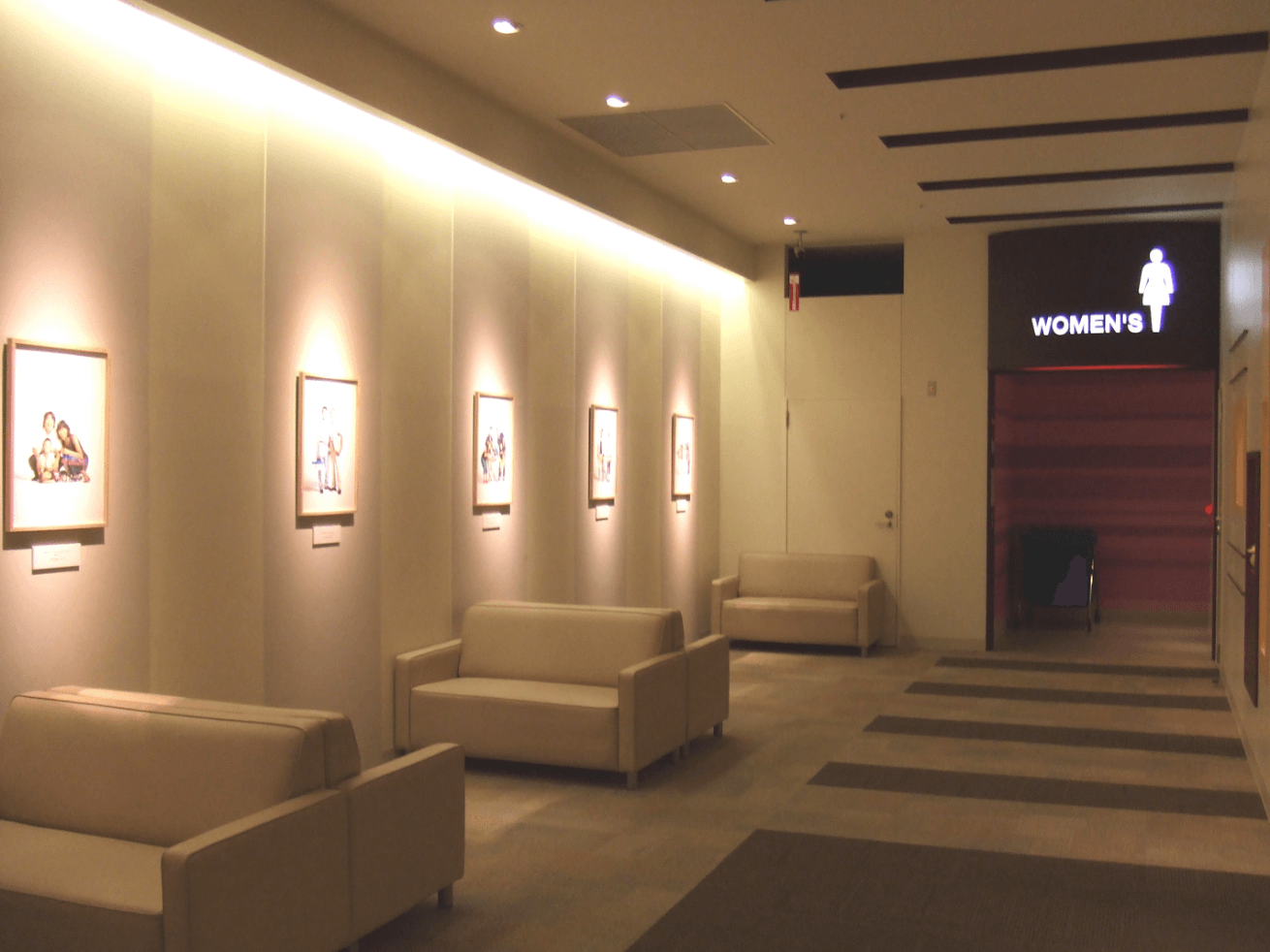
by restrooms - Building

entrances - Elevator signage
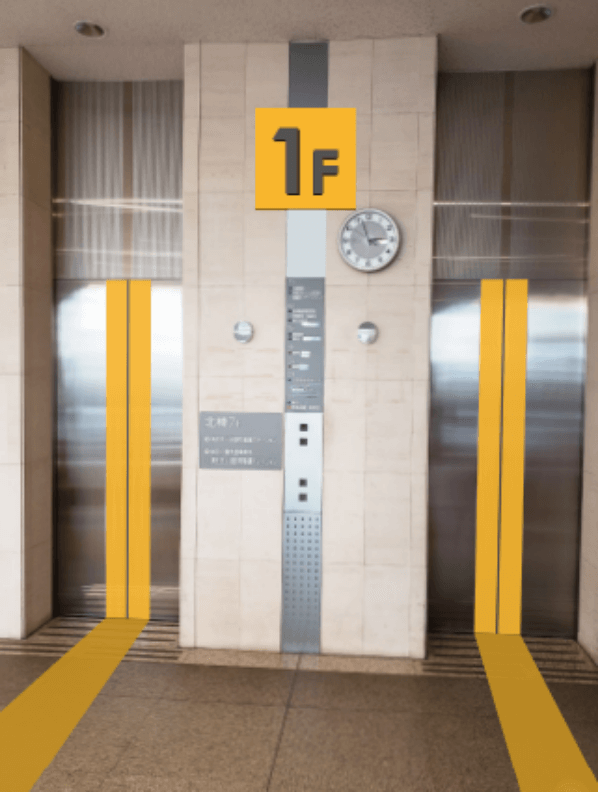
- Information desk

signage
Restroom Signage

Restrooms are the most frequently used amenities in most facilities.
Facilities are increasingly including special-purpose restrooms such as children’s restrooms, disability-accessible restrooms, or large booth restrooms that allow baby strollers inside. Guidance signage to the restrooms is critical, and the clarity and locations of such signage needs to be incorporated in the planning of the entire facility. Color and lighting must be utilized to ensure that the signage is easily seen even from a distance and can be recognized by all.
Since restrooms are often located in out-of-the-way places, it is important to reduce the time and effort that one spends time searching.
Disability-accessible restroom
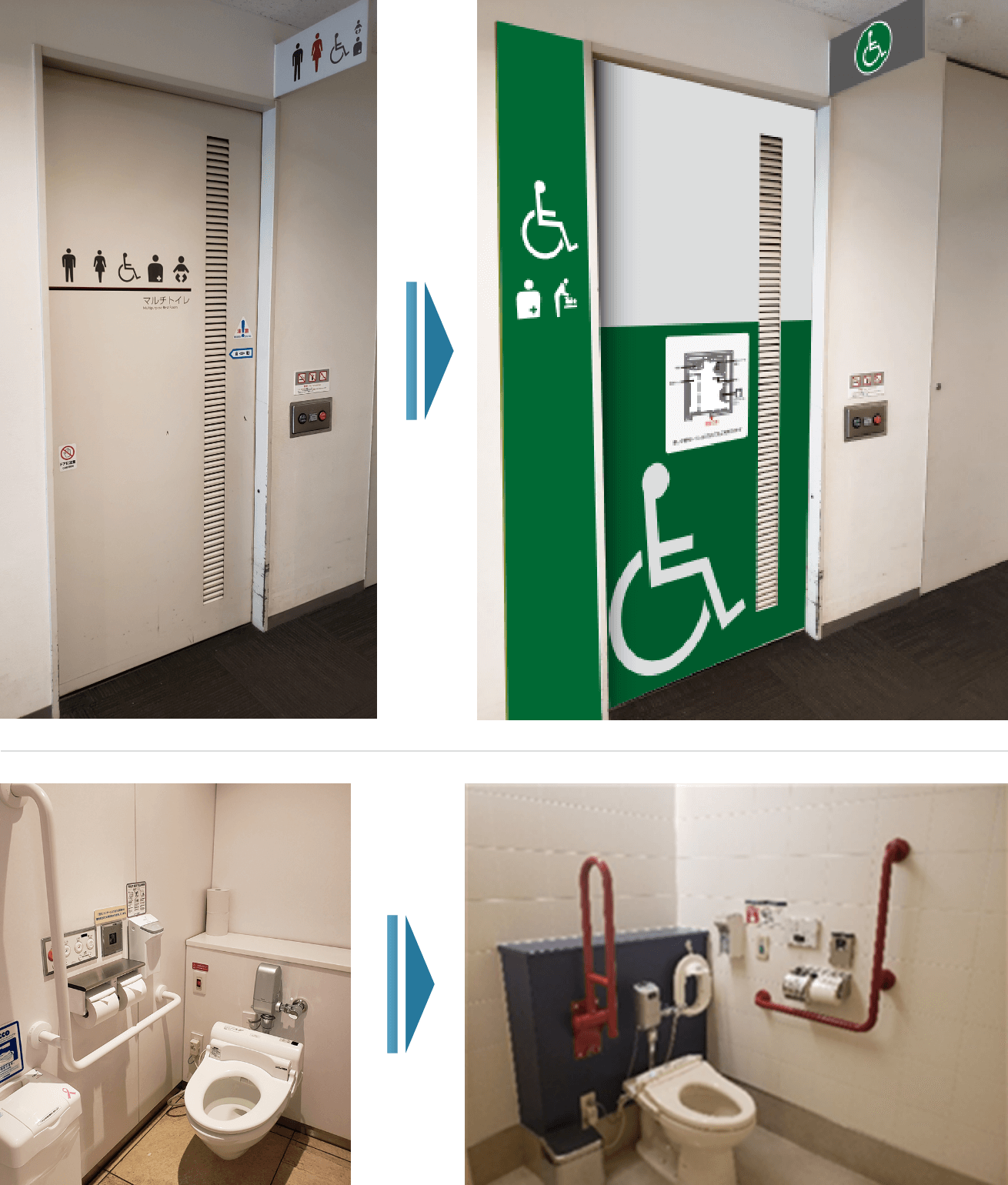
To increase the visibility to wheelchair users, it is important to use a large wheelchair pictogram with double labelling and situated at the eye level of wheelchair users.
The protruding sign, easily viewed from a distance, also uses the wheelchair pictogram.
The interior of the restroom uses accent colors rather than a uniform white, to enhance awareness of the handrails and rear of the toilet.
Rest area by restrooms

Reference photo
People often wait for others outside the restrooms and may be left standing with heavy luggage, which can be stressful for elderly people or those with small children. By creating a rest area next to the toilets, the stress of the waiting time is reduced. Even simple seating such as benches or stools is enough. The importance lies in creating a space that anyone can feel comfortable using.
Building entrances
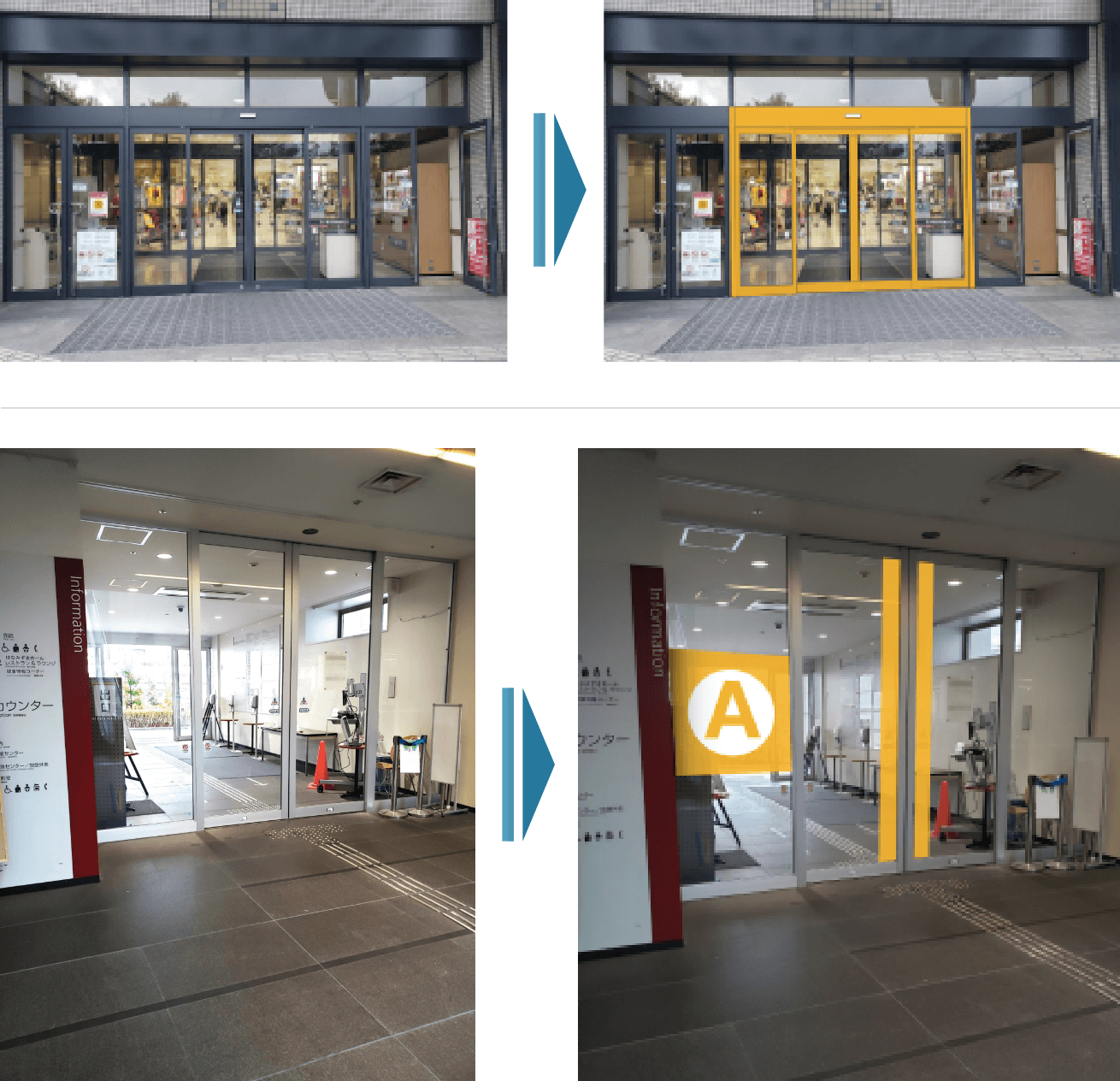
A building may have multiple entrances. Large hospitals, commercial facilities, shopping centers and stadiums, often have a large number of entrances. Entrances from the outside can be highlighted, and internal entrances can be made distinctive by adding color or numbers, making it easier for visitors to remember which entrance they came in from. In addition to numbering, indication of the floor on which the entrance is located can also be used.
Elevator signage
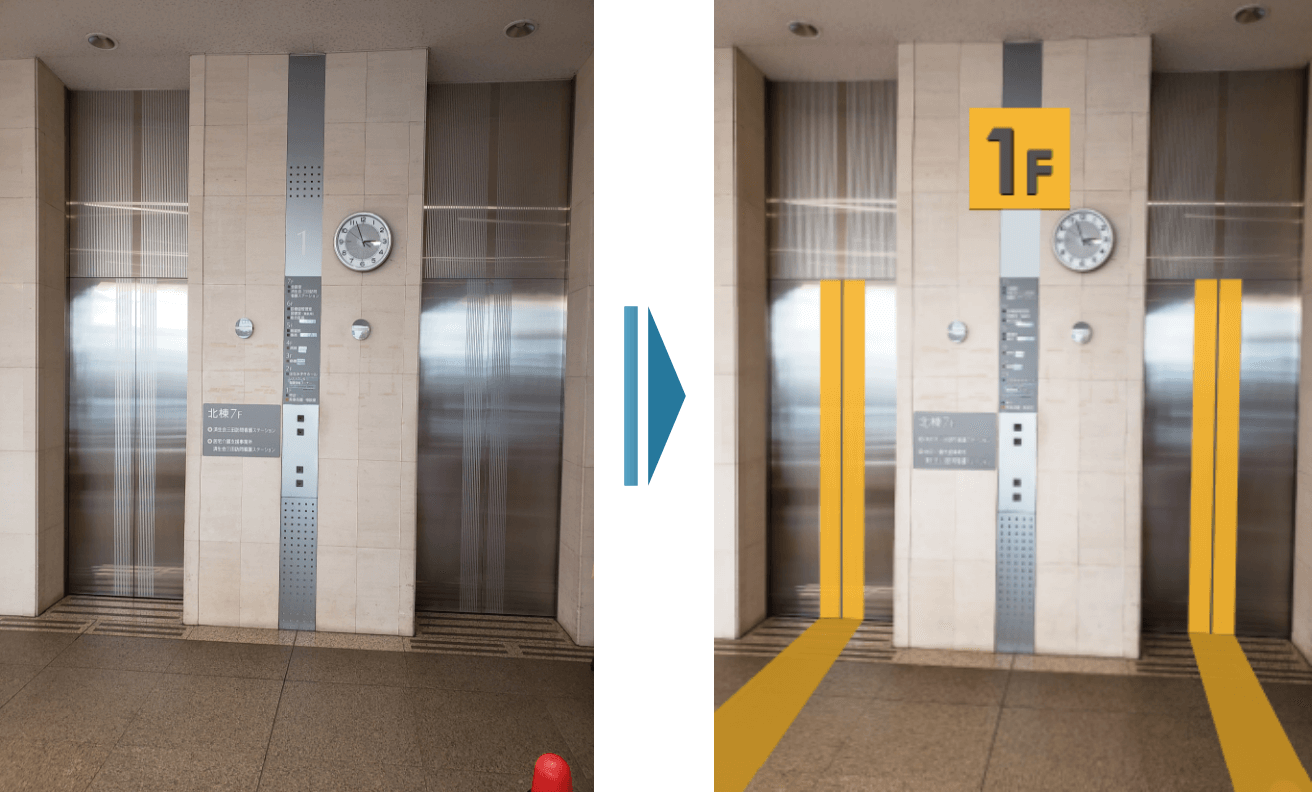
Facilities often contain elevators; however, understated signage or the use of identical designs can lead to confusion over which floor the elevator has stopped.
Therefore, the following can be done to increase
visibility:
- Signage that gives prominence to the floor
number
- Highlight the opening and closing doors by
using colors on the central line
- Draw lines on the floor to increase visibility
from the side
In addition, other initiatives to enhance visibility and usability of the elevators, such as nearby placement of signboards featuring a whole-facility map, may be required.
Information desk signage
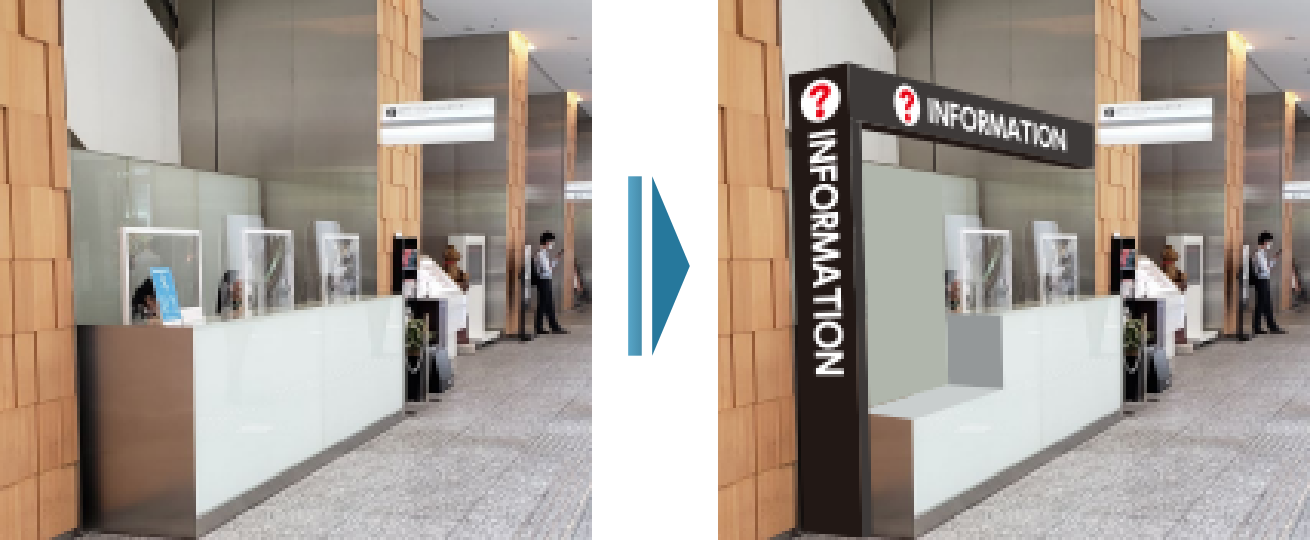
Information desks should be easily visible from far away and made distinctive using gates or sign pictograms.
About Okazaki UD Planning
Okazaki UD Planning’s Strengths: Substantial Record and
Experience in Universal Design in the Private Sector
Director Sonoko Okazaki worked on a project to implement universal design in the large-scale shopping center Koshigaya LakeTown, with AEON Retail’s construction division. The project was a major contribution to achieving a 91% customer satisfaction rate for the facility.
In 2014, the LakeTown initiative was the first commercial facility to be awarded the International Association for Universal Design (IAUD)’s
Grand Award. Since then, Okazaki has worked on a wide range of universal design projects. Okazaki has 12 years of actual experience in the universal design field, in addition to a record of around 80 completed UD implementations in facilities.
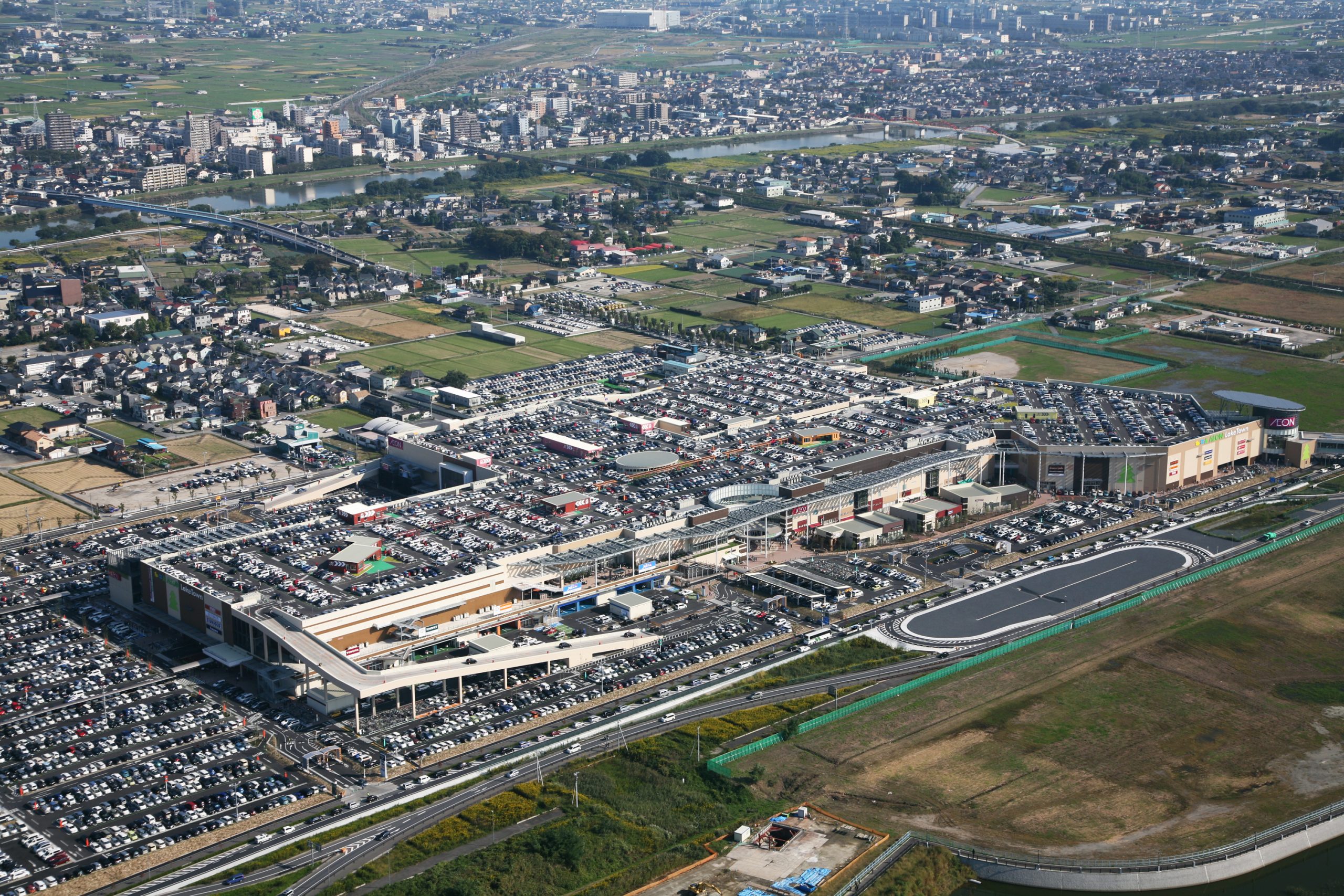
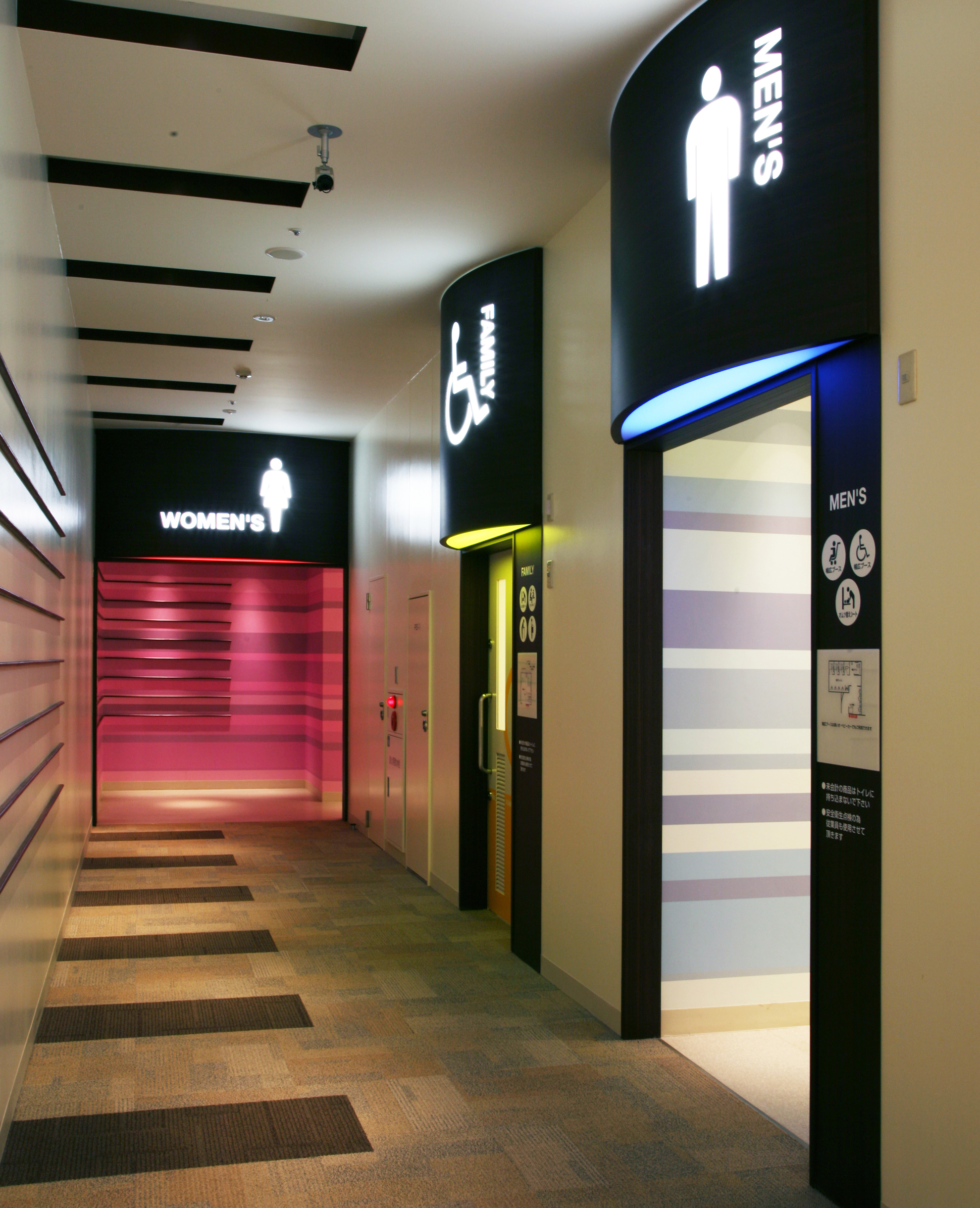
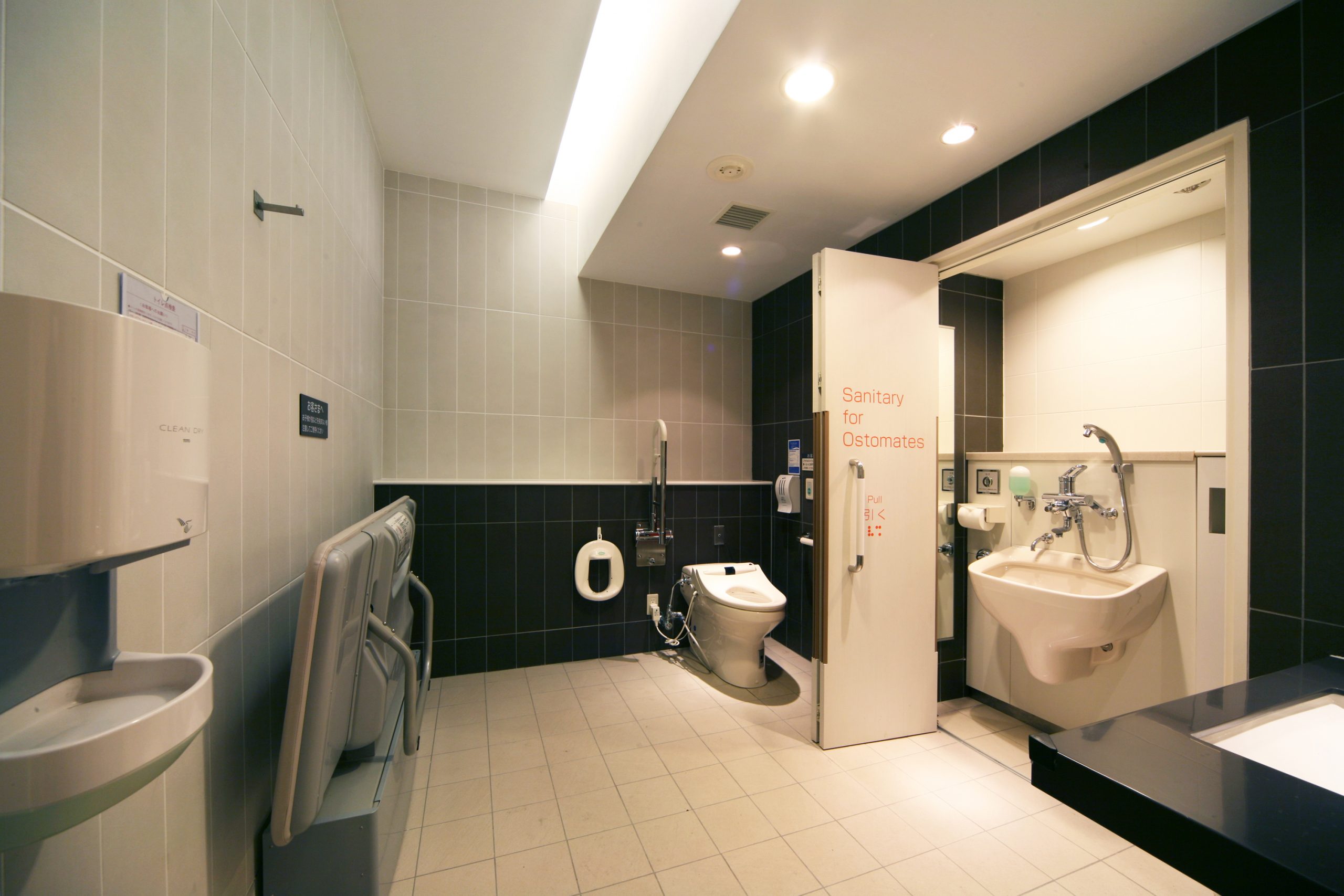
LakeTown shopping center in Koshigaya, Saitama Prefecture

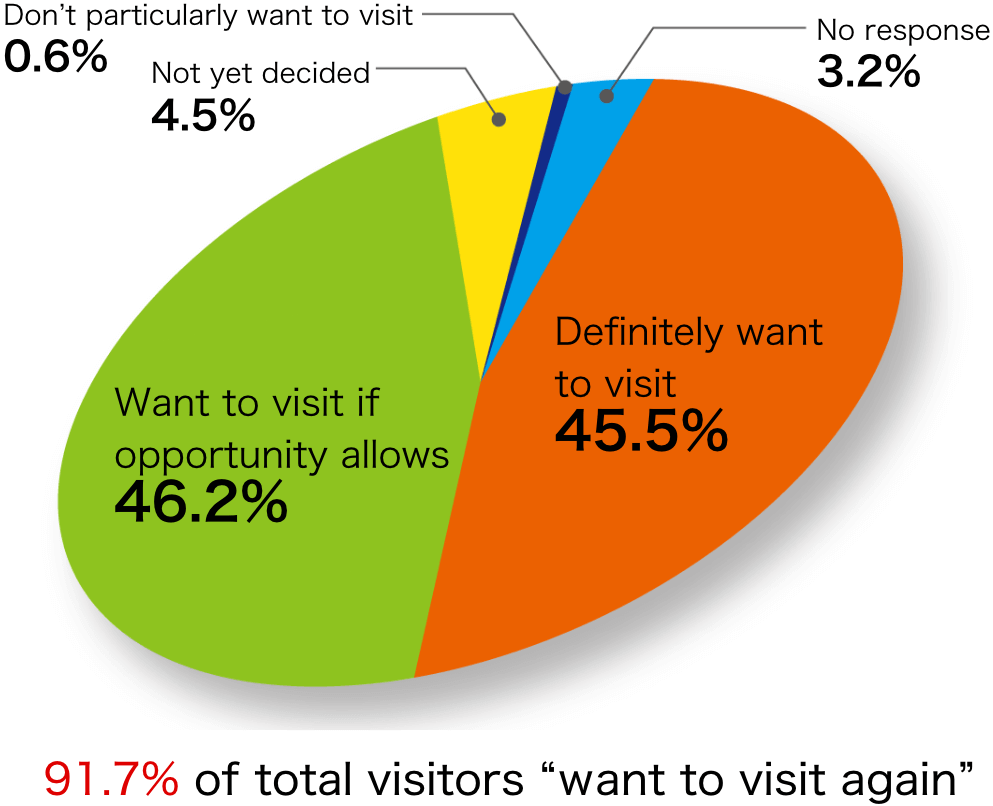
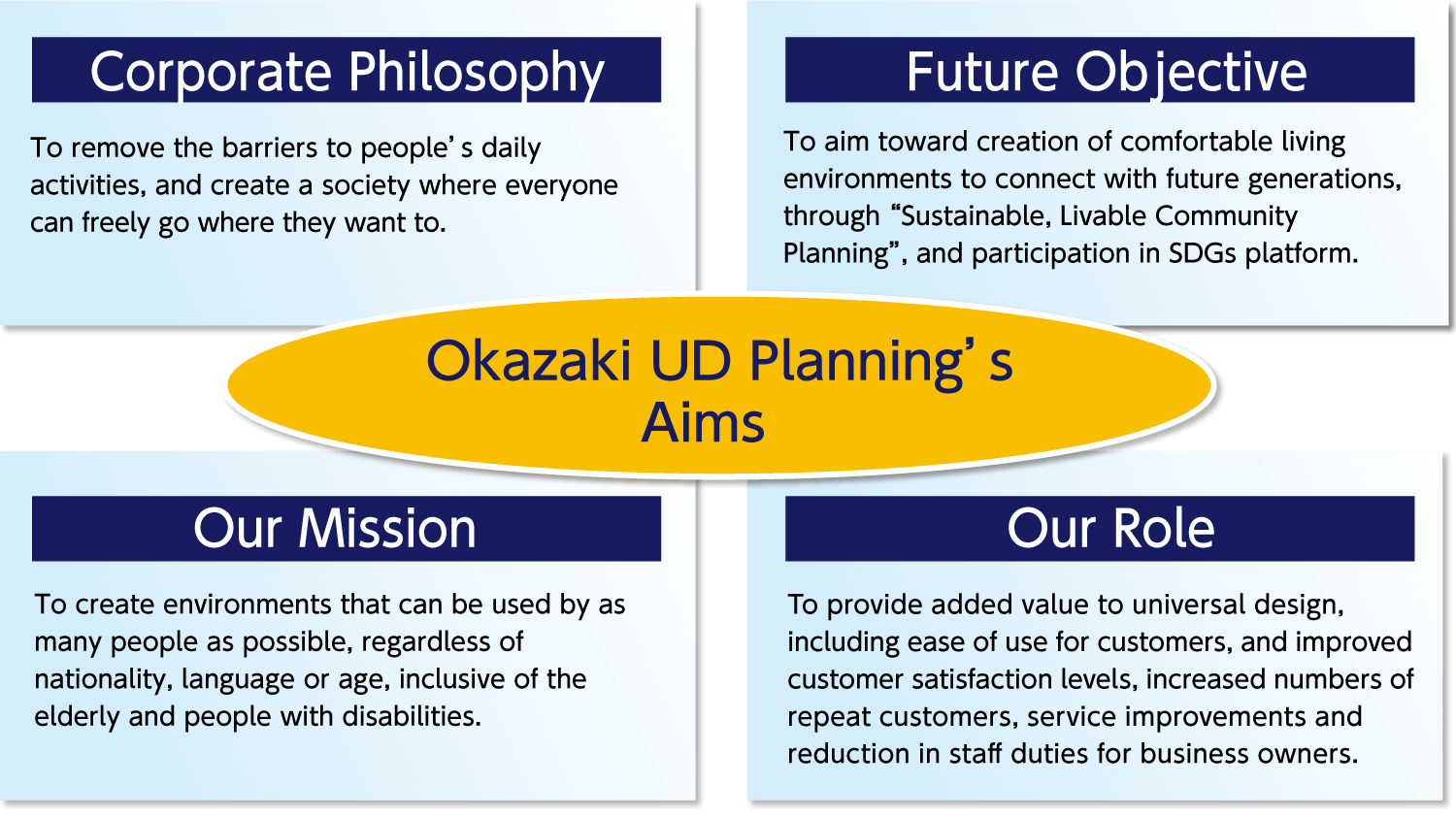
Profile
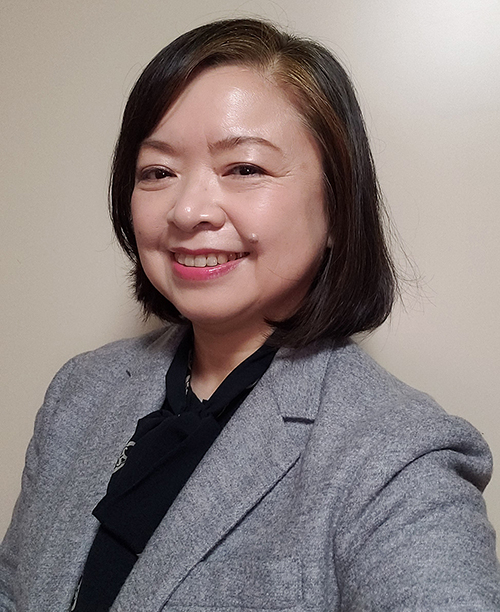
Sonoko Okazaki
Representative Director, Okazaki UD Planning Co., Ltd.
Engaged in environmental design and planning of commercial facilities while working in the construction division of AEON Retail Co., Ltd., carrying out design checks of over 1,000 stores, including building exterior design, environmental design for food court and restaurant, and the design of tenant stores.
In 2008, Okazaki was part of the universal design project at Koshigaya LakeTown, implementing “safe, visible, and clear store interior signage” and “easy-to-use toilets, nursing rooms, and rest spaces”, achieving a high degree of customer satisfaction.
Throughout the following years, Okazaki has remained involved in universal design, and in 2014 her work received the International Association for Universal Design (IAUD)’s Grand Award, the first commercial facility to do so.
In fiscal years 2017 and 2018, she served as a member of the Ministry of Economy, Trade and Industry’s planning committee for nursing room pictograms.
Okazaki’s skills also include restaurant design and planning, and as well as leading the environmental design of “PRONTO”, she has worked with overseas designers and designs of new enterprise formats for McDonald’s Holdings Company Japan, Ltd.
In September 2021, Okazaki UD Planning Co., Ltd. became a member of the Cabinet Office’s SDGs Public-Private Collaboration Platform.
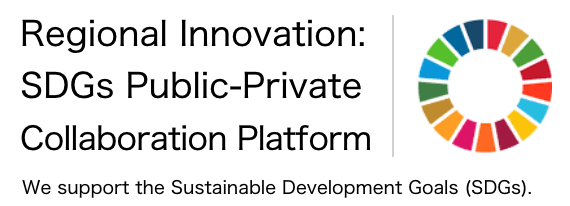
Graduate of the Department of Architecture, School of Engineering, Tokai University.
Company Outline
- Company NameOkazaki UD Planning Co., Ltd.
- EstablishedNovember 7, 2019
- Location 2-5-13 Oomori kitaguchi Bld.5F, Sanno, Ota Ku, Tokyo , Japan
- DirectorsSonoko Okazaki, Representative Director
- Business ContentsUniversal design-related advice and consulting for commerce, stores and facilities; universal design seminars and lectures; store and facility design, design planning advice and consulting.